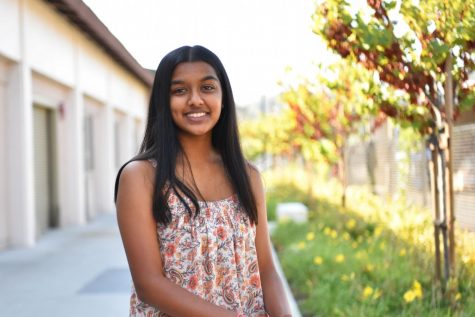Disney stirs controversy over older content on its new streaming service
Recent release of Disney+ brings back past culturally outdated movies and shows

December 20, 2019
Since Netflix’s release in 1997, the market for streaming services has grown rapidly, introducing competitors like Amazon Prime Video, HBO Now and Hulu. Nov. 12 marked the release of the most recent addition: Disney+, by The Walt Disney Company, with a catalog including almost every movie and show the company has produced. Within a day, 10 million subscribers signed up for the seven day free trial.
However, as subscribers continued to pour in, viewers such as senior Sayalee Mylavarapu noticed that older media contained offensive content that may have been more acceptable when they were produced. They incorporate stereotypes that are now considered distasteful, with current progressive movements that aim to challenge oppressive thinking from the past. Mylavarapu, an avid Disney Channel fan throughout her childhood, finds it understandable why Disney content has these references.
“When Disney started, it was still in an era where there was segregation and all that so obviously no one would say anything then because that’s what they believed,” Mylavarapu said. “No one really thought about changing those values until recently when all our ideals changed.”
Mylavarapu joined Disney+ soon after its release, as a chance to revisit her favorites from her childhood. However, she feels disappointed in Disney’s incorporation of the offensive material.
“But it’s not a surprise,” Mylavarapu said. We’ve been in a country where, even now it’s so racially insensitive, and there’s so many racist people, that it makes sense that they had a few insensitive things. You would think that a movie and a big company like them would be smarter about it, but I guess not.”
While Mylavarapu became aware of the content issues because of her Disney+ experience, English teacher Monica Jariwala has recognized these examples of culturally offensive material well before Disney+’s recent controversy. She teaches these instances as part of her curriculum, featuring clips from “Aladdin,” “Peter Pan” and “Song of the South.” Jariwala finds the objectionable content dangerous for younger viewers, who are the targeted demographic.
“If there are possible scenes they could omit from some of the older films, that might be more helpful. Because, children, their minds are like sponges,” Jariwala said. “If they’re able to watch that, what type of perspective are they getting about gender, race, and thinking it’s okay?”
As a response to the older, offensive content on the streaming service, Disney has addressed the issue with a content warning, stating, “[The program] may contain outdated cultural depictions.” Jariwala approves of the company’s acknowledgement but believes there is room for improvement, referring to Disney’s practice of editing programs for live television.
These movies are ‘classics.’ So people are going to want to watch them, but it’s also watching them, learning from them and not perpetuating that racism.
— English Teacher Monica Jariwala
“It’s the first step,” Jariwala said. “There probably could be more done; I did like hearing how Disney won’t show certain parts of old films that are really offensive. That’s a step two, but these movies are quote unquote, ‘classics.’ So people are going to want to watch them, but it’s also watching them, learning from them and not perpetuating that racism.”
While Jariwala views the warning as a progressive move on Disney’s part, sophomore Suryaansh Dongre takes a different approach. He perceives the content warning as more of a preventative measure for the public outrage he believes Disney would have received had they refrained from making any comment.
“I think it’s just like Disney is trying to tell the viewers everything that they can before they go in and start giving Disney a bad [reputation] on social media, for example, saying ‘Disney has included culturally insensitive content in its library,’” Dongre said. “[It’s] good publicity.”
While Dongre believes the content warnings help soften public opinion, he doesn’t hold current Disney accountable for allowing the offensive content in the first place.
“Disney doesn’t have that much control over regulating its older content because it’s hard to go back in and edit it,” Dongre said. “I definitely think that [the warnings are] the most that they could do.”
When it comes to the actual content on Disney+, Dongre believes the warnings will only affect viewers’ opinion slightly without completely deterring them from the content they want to watch. With that in mind, Jariwala doesn’t foresee this hurting the multibillion dollar corporation.
“Disney has its foot in every door now,” Jariwala said. “They’re very good and very strategic about being contemporary now and being more sensitive. I like Disney. I grew up with it, but there are some things they did that are really awful … But again, [it was a] representation of the time period.”
















